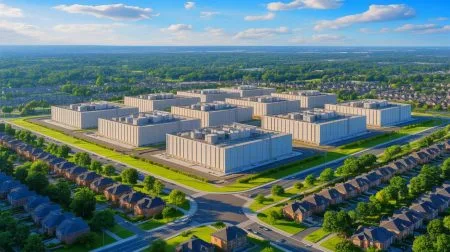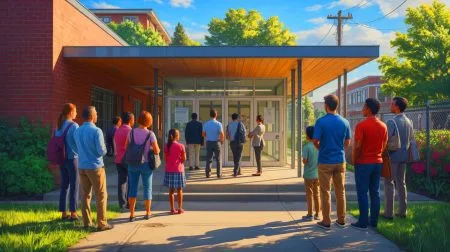| IN A NUTSHELL |
|
In recent years, the rapid expansion of artificial intelligence (AI) has brought about significant technological advancements. However, the infrastructure supporting AI, particularly data centers, has raised concerns among residents living nearby. These centers, essential for powering AI applications like ChatGPT and Grok, demand vast amounts of energy, reshaping local ecosystems and communities. A YouTube video titled “I Live 400 Yards From Mark Zuckerberg’s Massive Data Center” highlights the struggles of residents in Gallatin, Tennessee, near Meta’s data centers. As the demand for AI technology grows, so does the impact on these neighborhoods, prompting questions about the sustainability of such progress.
Impact on Local Communities
For many residents living near data centers, the promise of technological progress comes with unexpected challenges. In Mansfield, Georgia, Beverly and Jeff Morris reside within 400 yards of a massive Meta data center. Once a tranquil countryside retreat, their home now lies amidst construction and environmental upheaval. The Morrises recount the drastic changes, noting the destruction of local flora and the contamination of water supplies. Turning on their taps yields minimal water, often tainted with sediment, a consequence of ongoing construction activities.
Their experiences underscore a broader societal issue: the cost of technological advancement is not evenly distributed. While AI applications become more integrated into daily life, individuals like the Morrises bear the brunt of environmental disruptions. The struggle for basic resources, such as clean water, highlights the need for balanced development that considers local communities’ well-being alongside technological growth.
Rising Costs and Infrastructure Demands
The financial implications of living near data centers are significant. Residents report soaring utility bills, with electricity costs doubling from $250 to $400 monthly. This increase reflects the substantial energy requirements of AI technologies. Unlike traditional cloud computing, AI models necessitate exponential electricity, as evidenced by the stark difference in energy consumption between AI-driven and standard internet searches.
Alex De Vries, a digital trends researcher, illustrates this disparity. A single ChatGPT query consumes approximately 29.9 watt-hours, vastly exceeding the 0.003 watt-hours required for a typical Google search. This energy demand underscores the urgency of addressing the environmental and economic impacts of AI infrastructure. As data centers expand, the burden on local resources and residents grows, necessitating strategic planning and investment to mitigate adverse effects.
Community Struggles and Economic Realities
Communities surrounding data centers face more than just environmental challenges. In Fayette County, Georgia, residents like Jean and Joe Marschall grapple with noise, light pollution, and dust from ongoing construction. The rezoning of land, often conducted without community consent, exacerbates tensions. The economic benefits touted by development authorities, such as increased tax revenues, fail to offset the personal and environmental costs borne by residents.
For the Marschalls, the constant disruption is more than a nuisance; it’s a profound alteration of their living environment. Nighttime construction activities, complete with glaring lights and loud machinery, disrupt sleep and peace of mind. While economic data may show growth and increased tax income, the true cost of these developments is measured in the intangible losses experienced by those living in the shadow of data centers.
The Silence of Big Tech
Despite the growing concerns, major tech companies like Meta and QTS remain largely silent on the issue. Efforts to engage them in dialogue or secure facility tours have been met with resistance. This reluctance to address public concerns suggests a disconnect between corporate priorities and community needs. Residents call for legislative action to protect them from unchecked data center expansion, fearing that current growth trends will only intensify existing issues.
As AI continues to revolutionize industries, the question of sustainable development becomes increasingly pressing. The benefits of AI are clear, yet the costs, borne disproportionately by certain communities, demand attention. The experiences of residents like the Morrises and Marschalls raise important questions about the future of technology and its role in society. Will the march of progress leave communities behind, or can solutions be found that balance innovation with the realities of everyday life?
The expansion of AI infrastructure presents a paradox of progress. While data centers enable transformative technological advancements, they also disrupt the communities surrounding them. As the demand for AI continues to grow, so too does the need for thoughtful consideration of its impact on local ecosystems and residents. The question remains: how can society balance the benefits of AI with the costs to those living in its shadow?
Did you like it? 4.5/5 (29)








Wow, $1,000 a month extra? That’s insane! How do they expect people to afford that? 😳
Do we know if any legal action has been taken by the residents? 🏛️